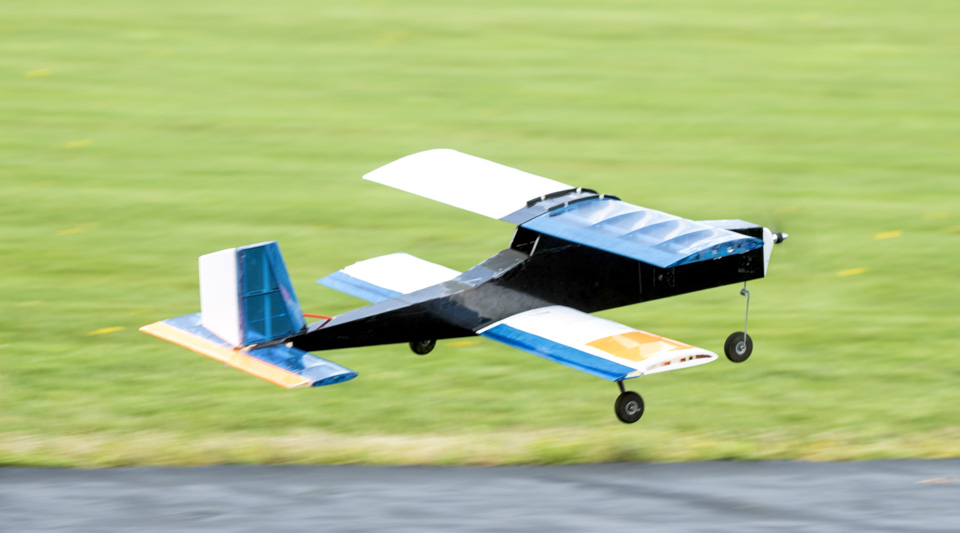Balance is everything when it comes to designing airplanes. One false miscalculation in the placement of the plane’s center of gravity (CG)—its invisible pivot point—and even the most beautifully designed plane can zigzag, stall or nosedive.
Each year, Notre Dame seniors in Aerospace Design match their wits against this engineering challenge as they design, build and fly radio-control (RC) planes.
Ten student teams designed and built RC planes during the fall and winter in preparation for flight tests in spring. Following a pre-determined flight-path—often while carrying payloads—each plane must complete two 180-degree and one 360-degree turn. Shorter take-off distances, faster lap times, larger payloads (golf balls), demonstrations of agility, and lower construction costs contributed to higher scores.









Student designs this year varied widely—a biplane, a stunt plane, a “push” plane with a rear mounted propeller, a plane with a tall green fuselage the students called “the fish,” even one with a releasable flight vehicle. Each design had its own set of challenges with CG placement.
“One of the main engineering challenges we faced regarding our CG placement was related to our detachable fuselage,” said senior Isabella Field. “While the bottom part of the fuselage contained vital flight components, the top half held golf balls for loaded missions. To keep the CG stable between missions, we used foam inserts to control golf ball placement and balance the plane.”


Inspired by the World War I Sopwith Camel, senior Kyle Wesseln’s team created a biplane to which they added a box-wing design.
“When our team chose to construct a biplane, we never thought there would be so many difficulties in balancing the CG,” said Wesseln. “Normally, with a single wing aircraft, the center of lift can be approximated to be at the quarter-chord—25% back from the leading edge of the wing. With a biplane, there is no definitive method to finding the center of lift, and we had to rely on empirical approximations from papers dating back to the 1940s.”


Andrew Lauerman’s team modeled their plane after a Red Bull stunt airplane, enabling barrel rolls, inverted flight, and leaf stalls. “We minimized stability to allow quick maneuvers. Our design lets us place the load entirely at or in front of the CG, without needing a counterweight in back.”
One team developed a unique “pusher” aircraft design with the motor mounted at the back. “Unfortunately, the motor is one of the heaviest components, which moved the CG backwards,” said senior Luke Ricci. “A traditional aircraft needs the CG to be forward of the main wing, so our team designed a long fuselage that placed the battery at the very nose of the plane to correct the imbalance.”


According to Bob Kistler, a longtime class mentor and member of the South Bend Radio Control Club (SBRC)—which has assisted Senior Design students for 29 years—new materials can also complicate CG calculation. “They’re not using just aircraft ply and balsa wood anymore, they’re using carbon fiber, aluminum tubing and 3D printed parts, and those parts frequently need to be altered by machining or trimming to reach optimal weights.”
Resolving CG challenges—like all the other problems the students faced—required teamwork. “I was amazed by the ingenuity of my teammates,” said Field. “They had so many ideas, and sometimes I’d think: that can’t possibly work. But it totally did. And it was like, well—there’s more than one way to bake a cake, right?”

—Karla Cruise, Notre Dame Engineering; Photos by Wes Evard, Notre Dame Engineering
